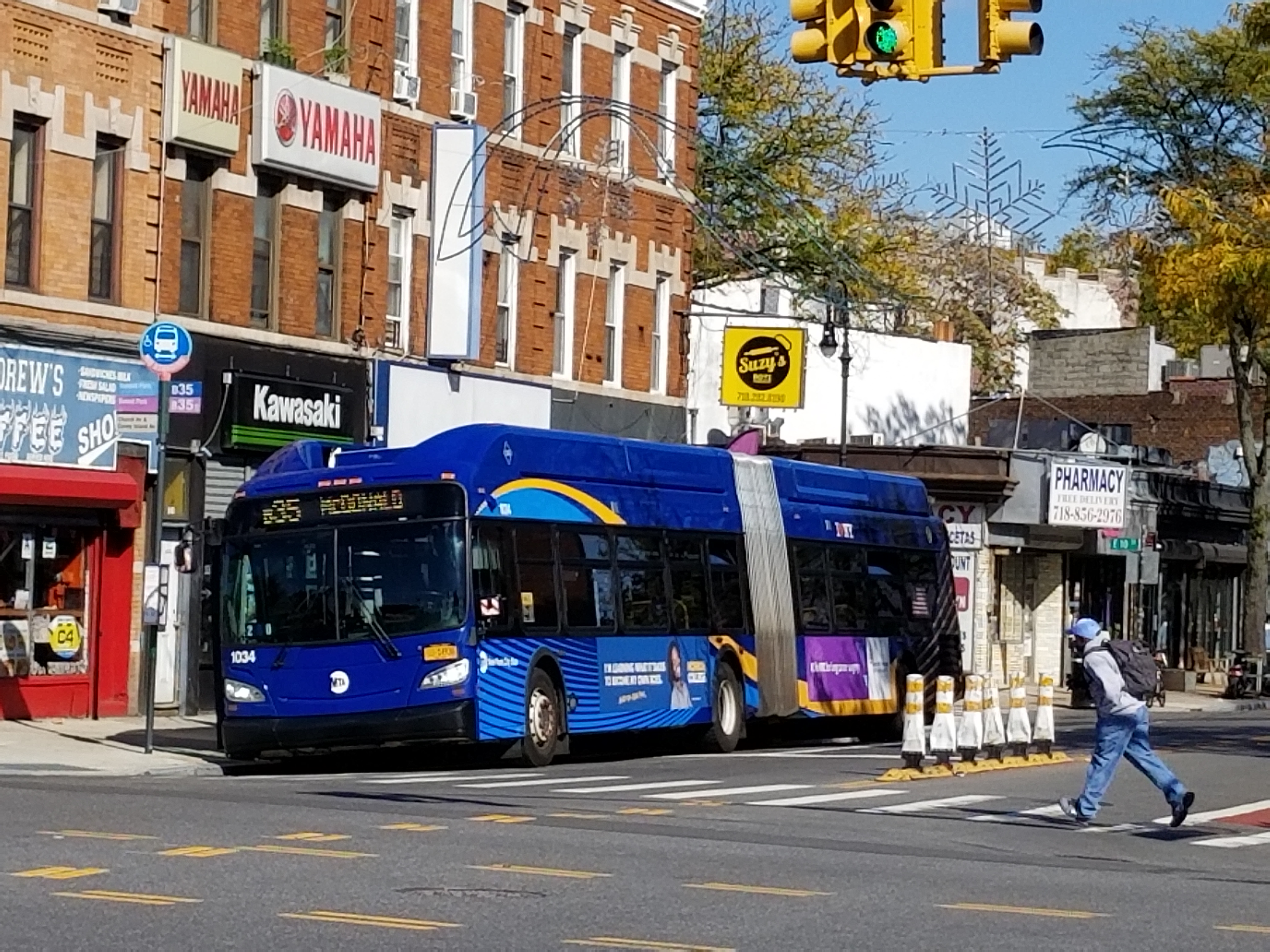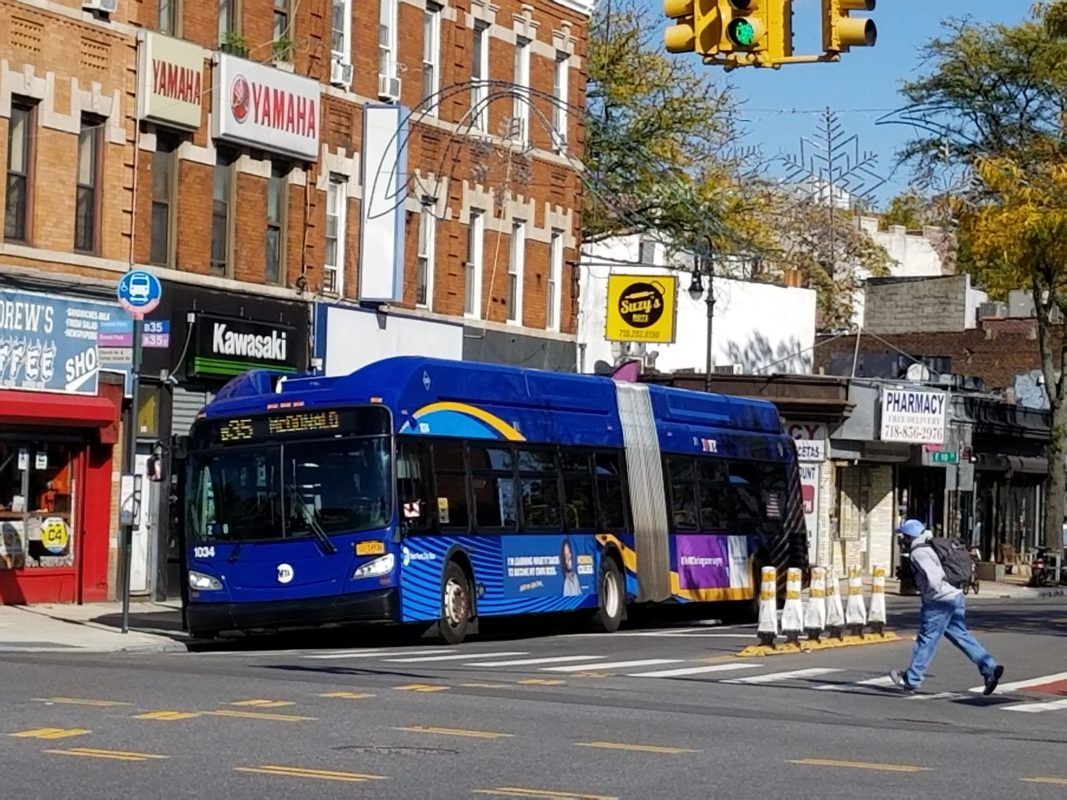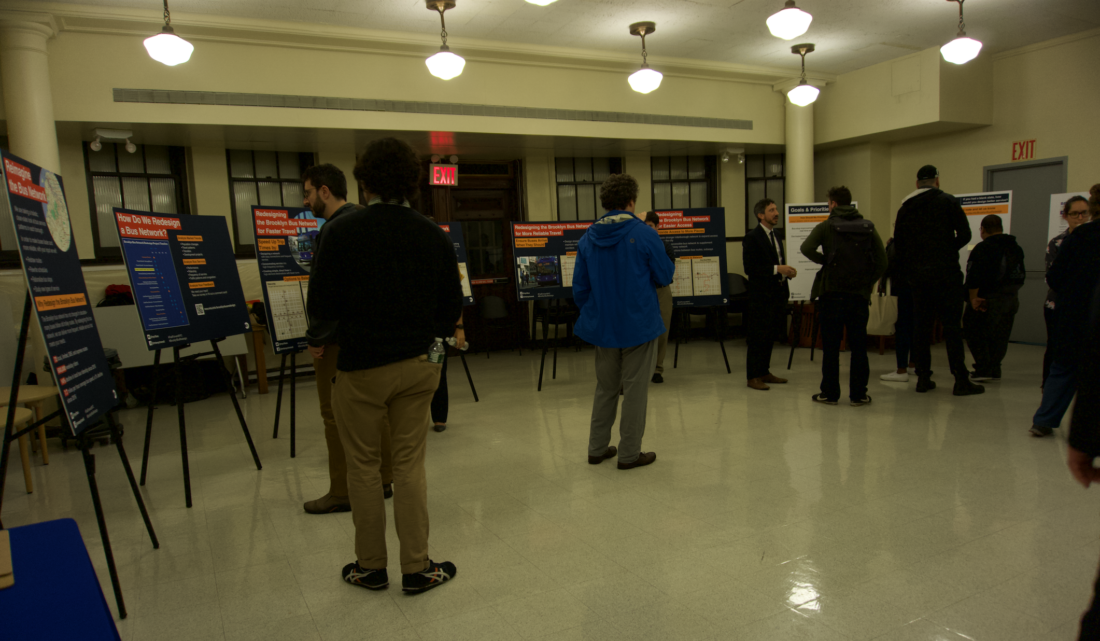Tell the MTA What You Hate About Your Brooklyn Bus Route this Fall


The bus routes in Brooklyn are in for a long-awaited redesign—as many still follow old streetcars’ routes leftover from the ‘50s. The MTA is taking a holistic approach and wants to rethink everything from scratch by asking for the public’s input.
The MTA just kicked off their first round of public outreach with an online survey and a series of open house events. The first event happened on October 29 in Bushwick and will be followed by nine more events across Brooklyn throughout the fall.
THE OPEN HOUSES
In the basement of DeKalb Public Library, cardboard posters positioned in a half-circle explained the planning process of Brooklyn’s bus network redesign and gave a quick overview of how the public can get involved. Some posters were paired with a stack of post-its on which attendees were encouraged to write their concerns and ideas.
With these open house sessions, the MTA aims to learn what bus users struggle with and what their wishes are. One of the posters fittingly asks: “If you had a blank slate, how would you design better service?”
For the most part, they ask simple “would you rather have A or B” types of questions to get an idea of bus riders’ priorities. The three trade-offs they’re focusing on are: frequency vs. coverage; simple, direct routes vs. complex, indirect routes; and more stops vs. fewer stops.
The MTA is aware that everyone has their own, personal reasons for choosing certain answers, but through these surveys and their own research, they hope to satisfy the needs of the largest number of people.

COMMUTERS’ CONCERNS
A self-proclaimed elderly woman and a man holding a bike helmet were in a discussion about bike lanes versus bus lanes. The woman said that bike lanes are blocking the busses from moving swiftly, and as someone whose only option is taking the bus, this frustrates her. The man, on the other hand, thought that biking should be encouraged, because it’s better for the environment and—if more people do it—for the city’s traffic flow.
“This is what we’re here for,” said an MTA employee assisting people at the event. “We want to hear all of your concerns.”
Other attendees mentioned, among other things, unreliable service, stop spacing and windy routes as concerns.
Cerelia St. Bernard and Shariah Frost attended the event together to talk about their issues with the B62 and B24 lines.
“I have the app and it tells you when the bus is coming,” said St. Bernard. “Sometimes it will tell you that the bus is coming and then it goes to 24 minutes again. It also happens that it comes, but then the sign on the bus turns to ‘out of service’ out of nowhere.”
Frost said: “Sometimes, there will be three [B62] busses at the same time, and then you won’t see another one for an hour. It happens often, so nobody takes the B62 anymore. I work in downtown Brooklyn and this bus should take me straight there, but now I have to alternate my route. There have been times I had to take a cab to work.”
Harley Polack suggested that the busses could be improved by expanding the SBS services.
He said: “A lot of times when you’re going from one part of Brooklyn to another you have to take the bus. And the interference of street traffic makes the bus so slow that it is sometimes slower than walking. This increases the amount of travel time. I’m a big supporter of the fewer stops, higher frequency, more consistency and faster overall travel time.”
Another Brooklyn resident, Ashley Pryce, said: “I personally ride the B82 and the B103. They’re pretty good routes. Generally, I’m concerned about stop spacing, like, getting rid of some stops so busses move a bit faster. And really thinking big about changing some of the routes that are super long and windy. So, I definitely want to see straighter routes and some reduced stops.”

WHAT WILL THE MTA DO WITH YOUR OPINION?
The MTA just finished this same planning cycle in the Bronx and started in Queens about six months ago. The MTA press office told Bklyner that the final plan for the Bronx looks different from the original plan thanks to users’ input throughout the planning process.
The planning process for Brooklyn will last about a year and it is still unclear how long it will take for them to implement the changes. This depends on what they discover during their surveys, feedback and research process—if it turns out that there are many issues with the current system, coming up with solutions could take a long time. During this year-long redesign planning process the MTA will produce several draft plans and opportunities for bus riders to share their opinions about them.
Since the MTA operates the busses, but the NYC Department of Transportation operates the bus stops, the agencies work closely together to create these plans. Both do research into users’ claims and collaborate on plans.
WHERE TO GO
If you have questions about the redesign plans or want to share an opinion or idea with the MTA about their bus services in Brooklyn, you can stop by one of their open houses:
- Wednesday, October 30: Crown Heights Library, 560 New York Ave
- Monday, November 4: South Shore High School, 6565 Flatlands Ave
- Wednesday, November 6: New Lots Library, 665 New Lots Ave
- Thursday, November 7: Williamsburgh Library, 240 Division Ave
- Tuesday, November 12: Park Slope Library, 431 6th Ave
- Wednesday, November 13: Bay Ridge Library, 7223 Ridge Blvd
- Tuesday, November 19: Brighton Beach Library, 16 Brighton 1st Rd
- Wednesday, November 20: Walt Whitman Library, 93 St. Edwards St
- Thursday, November 21: Kensington Library, 4207 18th Ave



